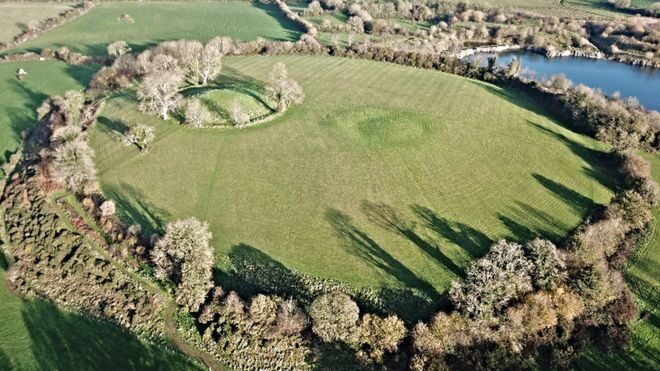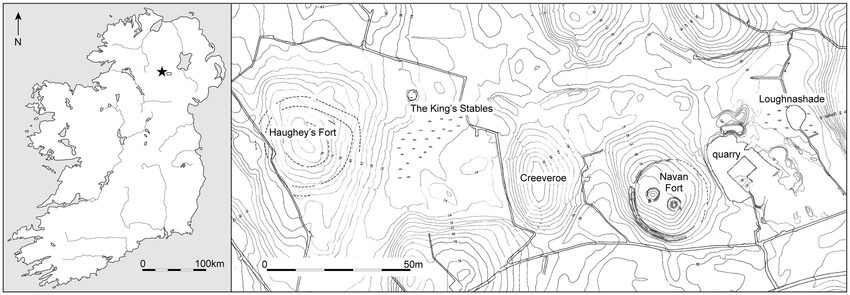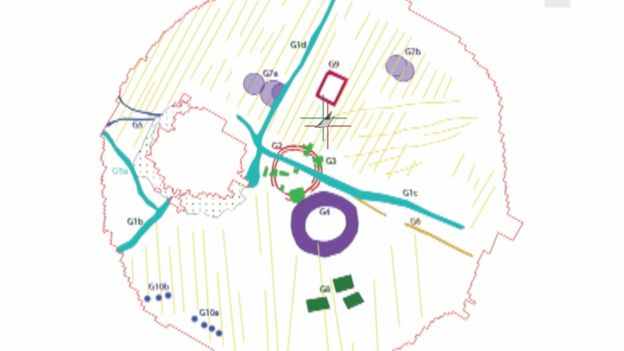
Armagh is the ecclesiastical capital of Ireland, home to both Catholic and Anglican archbishops.
But before the arrival of Christianity in the fifth century it was a place of huge religious importance.
Archaeologists believe they have uncovered evidence of Iron Age temples and other religious complexes.

Dr Paddy Gleeson, who is part of QUB's archaeology department, explained that both of these measure "the magnetic properties of the soil" and "the way in which the soil conducts electrical resistance".
"That allows us to map the buried archaeology for which there is no above ground trace and to be very precise about the nature and interrelationships of those monuments," Dr Gleeson said.
"It would give you a very good indication of the footprint of these buildings and the scale of the structure.
"I suppose that's one of the reasons why this feels so significant, because these are truly monumental structures, they are absolutely huge by the standards of the age.
"These could probably be some of the largest structures built in the first millennium BC and the first millennium AD."
Significant funding needed
The fresh research builds upon previous work undertaken at the historic site.
In excavations over the past number of decades, a series of different buildings have been found here.
There has been debate over whether these are domestic or religious structures, but Dr Gleeson believes the research shows that they are "pre-eminently religious structures".
"They are ritual buildings constructed to be temples," he said.
This mound and enclosure were preceded by a number of elaborate buildings and enclosures, Dr Gleeson explained.
"In particular, two figure of eight buildings and both of those, in the early Iron Age stood inside a massive figure of eight enclosure spread across the entire hilltop - about 140m in diameter," he said.
"We have to verify this by excavation, but we possibly have a whole series of palisades that relate to the four different phases of building the exact same building in the exact same spot in the early Iron Age."
Excavation work would require significant funding, as would suitably showcasing any subsequent discoveries.
Dr John O'Keefe of the Department for Communities historic environment division believes there is an appetite for knowledge at Navan Fort.
"This discovery means quite a lot in terms of how we understand and view this site," he said.
"This is a place that connects into history, society, religious, commerce, at a site like this, all of your senses get a bit of excitement.
"You can see things, smell things, touch things, but your imagination has to work quite hard to see some of these things that have been discovered underground to put them into context."




Comment: See also: